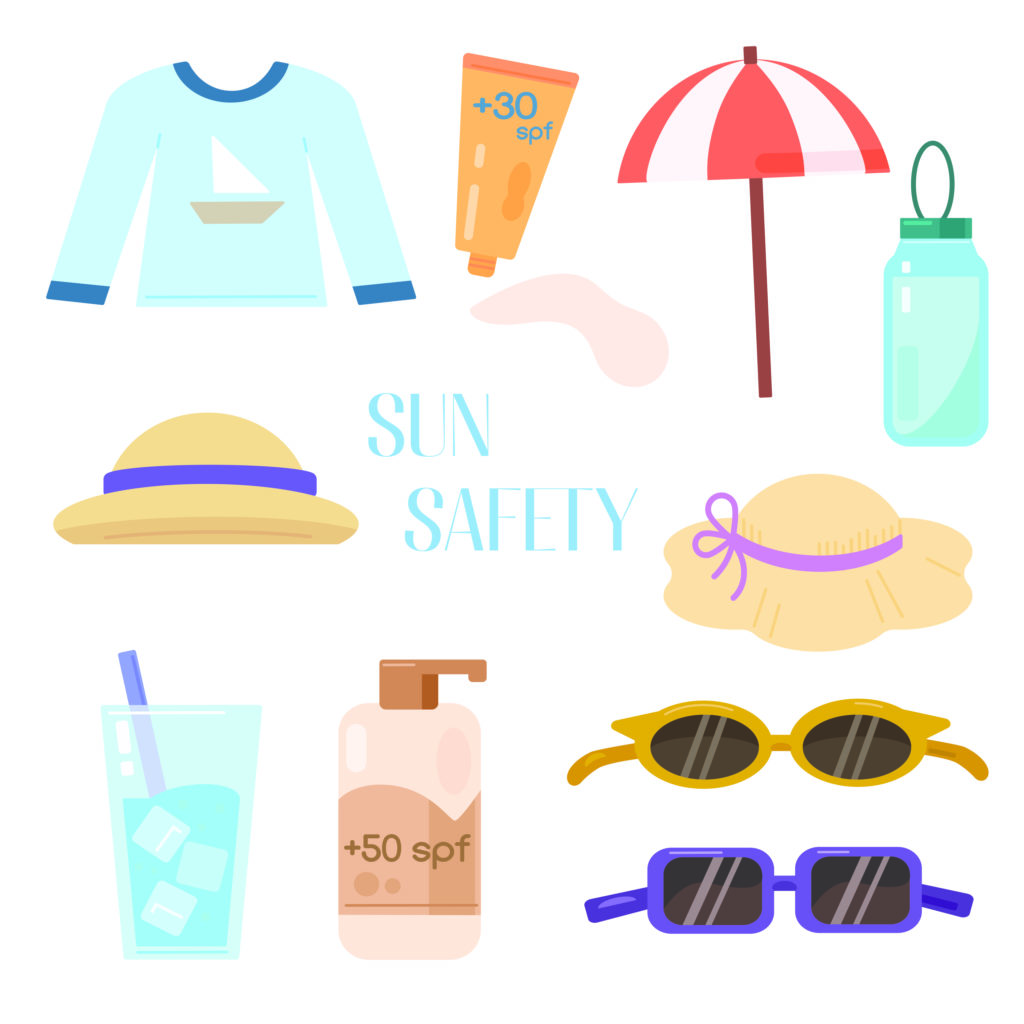My worst sunburn ever was from laying out on an overcast day. I didn’t expect to get much of a tan, let alone sunburnt, given the conditions. I was especially unconcerned since I couldn’t see any color change at the time. But by evening, my skin was a bright pinkish-red, and the pain set in. I couldn’t wear clothes and had to call in sick for two days.
July is UV Safety Month and aside from severe sunburn, there are other equally important reasons to take extra precautions in the sun, especially during the hot summer months.
Skin cancer is the most widely recognized health problem resulting from sun exposure. To reduce your risk:
- Avoid afternoon sun.
- Apply sunscreen with an SPF of 30 or higher at least 15 minutes before you go out and then reapply every two hours.
- Look for products carrying the Skin Cancer Foundation’s blue seal of approval.
- Wear clothing that covers your arms and legs as well as a hat to shade your face.
The sun’s rays also damage our eyes. Exposure can cause cataracts as well as damage to part of the retina, cornea and lens. Cheryl Khanna, M.D. of Mayo Clinic, recommends wearing sunglasses that block 99 to 100 percent of UVA and UVB rays. Also, some sunglass designs offer better protection. The best designs to block out as many UV rays as possible are wrap-around or close-fitting sunglasses.
The risks of dehydration and heat exhaustion also increase during warmer months. It’s important to drink several glasses of water every day of the year, but especially during the summer months. If you’re in the sun or heat for any length of time, take plenty of water with you. Better yet, carry sports drinks, since they contain electrolytes. Also, try to restrict outdoor physical activity to cooler parts of the day.
Special Considerations for Babies
Sun exposure also increases the risk of cancer in children. This is of particular concern for babies because of their sensitive skin. According to the Skin Cancer Foundation, a sunburn on a baby can be much more serious and result in high fever, dehydration, blistering and heatstroke.
To protect babies from the sun, keep them out of the direct sun from 10 a.m. to 4 p.m. Dress them in lightweight clothing that fully covers their bodies. Keep their heads covered with hats or sunbonnets with 4-inch brims.
For travel, place babies in the center position of the back seat or cover the car windows with UV-blocking film. Also, to keep infants and young children hydrated, carry Pedialyte, which is an excellent source of electrolytes.
Related
The Ultimate Guide to Outdoor Movies in Washington, D.C., Maryland and Virginia
Keep Cool With Summer Reading Programs

